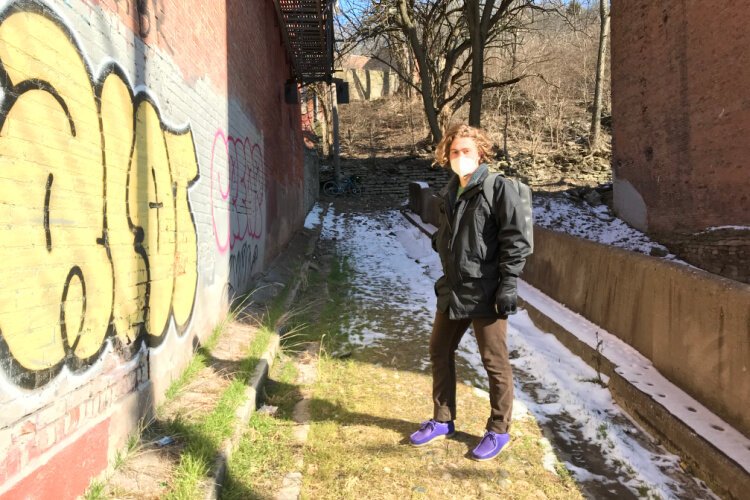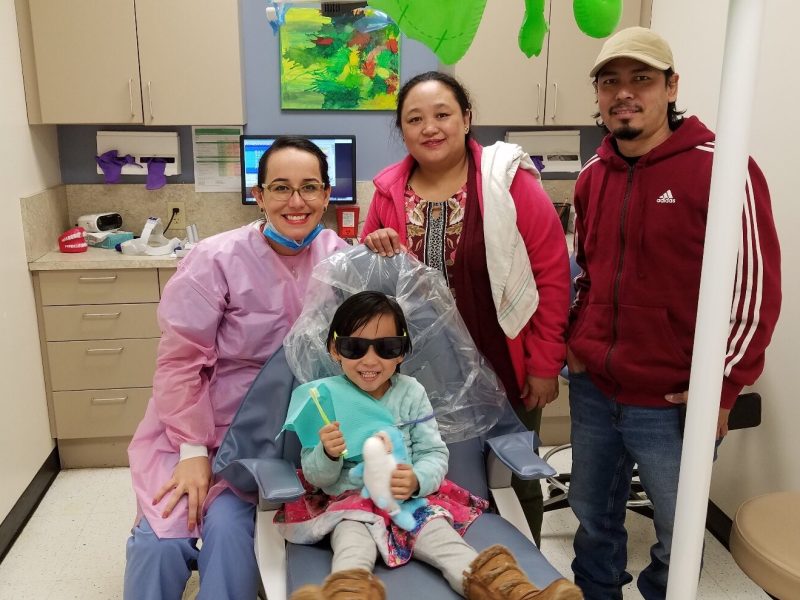They work to bring neighborhoods back, a step at a time
A small group of urbanists has been mapping, repairing, and cleaning alleys and the steps that traverse the city's hilly neighborhoods since 2012.
Thousands of people speed past Peete Alley every day, sailing down Vine Street hill from Clifton Heights into Over-the-Rhine, or they accelerate past it on their way up the hill, heading to Clifton, Mount Auburn, or points beyond.
Either way, it’s unlikely they even notice Peete Alley. It’s one of hundreds of alleys in the city, and on the surface, it doesn’t seem to go anywhere that anyone would want to go, surrounded as it is by vacant buildings, graffiti, and crumbling walls.
But to a small, committed group of urbanists, Peete Alley is a historic link to Cincinnati’s past, as well as a gateway to a future more friendly to living and walking in the surrounding neighborhood.
A group called Spring In Our Steps, which since 2012 has been mapping, repairing, and cleaning alleys and the steps that traverse the city’s hilly neighborhoods, has adopted this alley, and this spring is planning to restore a section of it to something resembling its original construction.
Peete Alley is one of only a handful of alleys where the materials used to create its surface are still there, says Spring In Our Steps founder Christian Huelsman. It was originally surfaced with cobblestones — rounded, irregularly shaped river stones — not bricks or pavers. In the 19th and early 20th century, cobblestones were cheap and plentiful, and alleyways in the city’s core were paved with them to make serviceable paths for horses and humans. Most of them were eventually replaced with brick, and later covered over with asphalt.
“Peete Alley is a significant piece of the city’s history,” Huelsman says.
The alley connects with the 2000 block of Vine Street, where it ascends for about 50 yards, then makes a nearly 90-degree right turn to ascend further to the terminus of Peete Street, a narrow, four-block long lane that runs straight into Main Street.
Beyond the significance of its cobblestones, Peete Alley is part of an old network of alleys and steps that connect streets and neighborhoods. In the days before motor vehicles, this network was a way to navigate the city’s steep hills and get from street to street, neighborhood to neighborhood.
“As the city developed, these alleys and stairways became an integral part of how people got around,” Huelsman says.
Since 2012, Huelsman and other volunteers have been cleaning up steps and alleys, making them walkable again. A recent project has been one working with the South Fairmount Community Council to improve access to steps that lead from Queen City and Westwood avenues.
But over the years, gravity has taken its toll, as the walls and steps built into the hills have sagged, buckled, and crumbled.
Neglect and abuse have taken their toll too. Buildings around Peete Alley have been vacant for decades. The alley is littered with garbage, and for most of its length, someone walking there needs to navigate ruts, broken asphalt, and rocks.
“It’s like off-roading,” says Nate Weyand-Geise, a Spring In Our Steps volunteer, UC student, and urban explorer. “I feel like you need heavy boots sometimes.”
The Peete Street steps actually feature a plaza on the Vine Street entrance that, years ago, may have been a pleasant place to wait for a bus, or even earlier, for a cable car that hauled people up the hill. But today, it’s unmaintained, dirty, needs paint, and for many years was blocked from view by an abandoned, graffiti-strewn truck.
“Mount Auburn and Over-the-Rhine along Vine Street has been overlooked for a very long time,” Huelsman says.
Back in 2012, Huelsman and some like-minded volunteers began taking an interest in Peete Alley, drawn by its intact cobblestones, many of which were then buried under dirt, rocks, and broken glass. For a couple of years, Huelsman and crew would host a cleanup there every month or so, picking up dumpsters full of garbage and other debris.
The group successfully petitioned the city Department of Transportation and Engineering for funding to install pedestrian-scaled signs to mark the steps and alleys in the neighborhood, giving them identity and creating a sense of place: the Peete Street Steps, Peete Alley, Frintz Street Steps, Sharp Alley Steps, Main Street Steps, South Wendell Alley, and six other attractive blue-and white signs attached to concrete bollards.
Then sometime later, it was discovered that Peete Alley had been damaged, many cobblestones removed, and much of their work undone. It’s unknown who was responsible.
So this spring, the group expects to be back in Peete Alley cleaning, repairing and restoring.
It’s working to get a city permit to repair the alley, and has raised $2,000 so far for materials, says Weyand-Geise. The group maintains a small storehouse of cobblestones it has collected to use for such repair work.
“The main priority is bringing access back to this space and making it look like people care,” he says.
Merely walking in these spaces, in their current state, can raise suspicion and fear, he says. “This is a public space; you’re supposed to feel like you’re allowed here.”
The work at Peete Alley and the many other alleys and steps the group has worked on may be small in the grand scheme but they matter to old neighborhoods that have been forgotten and maligned by disinvestment.
“We try to clean up these spaces so they magnetize new users who are eager to explore and also are attractive to a new status quo,” Huelsman says.
They matter to neighborhoods that have suffered from decades of neglect. “These improvements are absolutely an equity issue,” Huelsman says. “These improvements have been off the radar of the city for decades. It doesn’t have the staff or contractors who do that type of work.”
Such neglect, he says, “is a perfect recipe for misuse and disuse of a public space.”
Indeed, on a recent visit to the alley, a woman, perhaps from one of the rehabs on Peete or Mulberry street, quietly walked her dog in a vacant lot. Fifty yards away, outside an abandoned building, a young man was sticking a needle in his arm.
Taking such spaces back and investing time and effort and money into them helps make them available again for legitimate, safe, public use, Huelsman says.
“When you start to show ownership or advocacy of that space, then you start to change the expectations for what that space should be and can become,” he says.


















